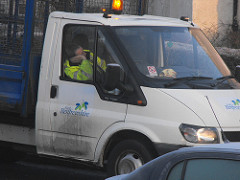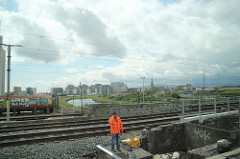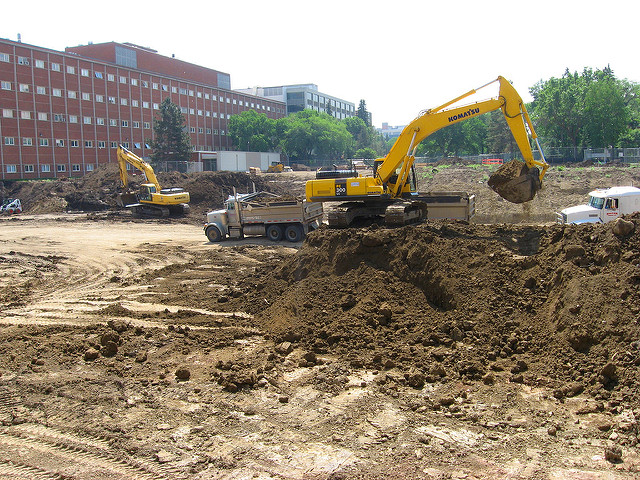We’ve all heard about it, and some of us have seen it. The cliched lazy tradesman or council worker, ‘bludging’ their way through a days work, only to still come to you and ask for our hard earned money as payment at the end of the job. What a pain, right? These guys are getting paid to do work, but are instead sitting around on their backsides…it’s enough to make you angry enough to write a strongly worded letter!
But is it all true? Sometimes yes. It’s hard to argue with someone sleeping on the job, or sitting in a cafe for 2 hours. But I’m here as a real life tradie to dispel some of the fiction and stick up for those of us out there who are genuinely not trying to rip you off.

“Why are you always sitting around doing nothing?”
This is the biggest question tradesmen and council workers get asked… and with good reason. People pay us to do a job, so seeing us sitting around doing nothing doesn’t send a great value for money message, but here are some valid reasons.
- We are allowed to take breaks.
Just like office workers, we get morning tea and lunch breaks. Most government awards require a 15 minute paid break after 3 hours work, followed by at least a 30 minute break after 5 hours. Most genuine workers will fit their breaks into these windows, or work off any extra time at the end of the day, but unfortunately, there are a few bad eggs that take advantage of this and will sit in a cafe for hours every day. Check the time of day you’re seeing us not doing anything. If it’s around 9-9.30 or 12-12.30, it’s probably break time, and we actually have to stop during these. - We sometimes need extra breaks for safety reasons.
Stop. Revive. Survive. The most popular 3 word slogan on our roads in Australia. Stop every 2 hours to reduce fatigue. When you’re sitting on a machine like an excavator, mower, or tractor, it gets pretty mentally exhausting concentrating on the same job for long periods of time, just like it does driving a car. Most of these machines also vibrate a lot. Excessive exposure to vibration can actually cause nerve damage in your hands, feet and back, which can cause chronic issues later in life. It’s also sometimes a really hard job, and in the middle of summer, heat exhaustion can sneak up on you really quickly. A lot of organisations, therefore, will require their workers to rotate roles on a job site or even take a quick break to stretch and reset after 2 hours of consistent work on a heavy machine, or in extreme conditions (usually plus 35 degrees). You’ve got to realise, these machines can be extremely dangerous, and we all just want everyone to get home to our families at the end of the day, and sometimes a 5 minute break every couple of hours can be enough to do that.Look how this machine is perched to collect and load these trucks. One slip in concentration from fatigue, and there could be some pretty serious consequences (Excavation/Bill Burris) - Sometimes we legally can’t do anything.
A lot of the work tradesmen do is dangerous and legally considered ‘high risk’. Therefore, by law, certain safe work frameworks have to be set up to outline the safest way to use a machine, or undertake a task. A lot of trades like gardeners also use poisonous chemicals, that have a legally binding document attached to them on their label. If you’ve got any pesticides around your home, you’ll notice the phrase “NOT TO BE USED FOR ANY PURPOSE OR IN ANY MANNER CONTRARY TO THIS LABEL UNLESS AUTHORISED UNDER APPROPRIATE LEGISLATION” (or similar). That means, that if conditions on a particular day are outside this safe work framework or contradict a chemicals label, we legally can’t work. It’s not a choice of being lazy, it’s that if we do, we can be fined or even worse, killed.
Most good tradies will offer to waive the fee for a day like this, or will find something else constructive to do with their time, like… - Even though we work outside, we still have to do A LOT of paperwork.
You mightn’t think it, but tradies have a lot of paperwork that they need to find time in the day to do. For sole traders, there’s sending and paying invoices, organising sub contractors, juggling staff, applications with councils, general book keeping and legal reporting requirements. For council workers and big contracting companies, it’s even worse. Pre-start equipment checks, safe work method statements, hazard assessment check lists, maintenance reports, site audits, PLUS all the other stuff sole traders have to do.
Now as annoying as it is, most of the time, our vehicles become our offices. It’s easier these days with smart phones and tablets that we can do a lot of our work on, but we still need to take a good chunk of the day off to sit there and do this work…Now to clarify, a young apprentice leaning on a shovel playing on his phone probably isn’t doing paperwork, but if someone is on their phone whilst sitting in their truck or ute, or on a park bench with some sheets around them, they’re probably catching up on the backlog of paperwork, so don’t freak out just yet. - Sometimes there’s phone calls we just have to take.
This is one that I get A LOT and it bugs me so much. If you work in an office, think about how many time a day your phone rings or you get a text and how often you have to answer it. Now if you’re at a desk on a computer, it can be relatively easy to pick it up, have a chat, and get back into work without much hassle. Not the case for tradies. I really get annoyed when I get a call I have to take, because to answer, I usually have to stop what I’m doing, take off my PPE and then answer and chat whilst standing or sitting in the middle of a half finished job – not a great look. Sometimes though there’s just calls we have to take. It could be a about a delivery, another job, a safety issue, all things that need to be addressed. Your wife calling asking what you want for dinner though can probably wait.

So next time you see a worker ‘sitting around doing nothing’, could it be for one of these reasons?
“Well it doesn’t take 5 guys to do one small job”
This is another great one most tradies will hear in their lifetime.
True, it doesn’t take 5 people to do one job, but the chances are, everyone is actually doing a separate job.
I’m sure you’ve all seen a group of 5 or 6 workers standing around a hole, watching someone dig with a machine. Sure looks like all but 1 person are being lazy, but that’s not actually the case.

Let’s say that hole is in a footpath along a main road. In most Australian towns, chances are that underneath that footpath there are essential services, like water pipes, gas lines, electrical cables, and telephone lines/NBN fibre optics. Before any excavation work goes ahead, workers need to obtain a ‘dial before you dig’ report about these services, so they don’t rip them up and cause absolute chaos. On top of this, for each service in that location, there needs to be a qualified spotter, watching every movement of the machine so that it doesn’t come in contact with them, and they’re legally not allowed to do anything else other than this at that time, that includes not even spotting for another service. So 4 services = 4 separate people standing around watching. If there happens to be a person IN the trench or hole during the work like in this photo, then ANOTHER spotter is required as the job is within a confined space, so that could be an extra 5 people legally required to be standing around watching. This is pretty serious work though, and no one involved should be on their phone, having a smoke, nor mucking around laughing during it.
Another possibility is that there is a required progression of tasks that need to be done to complete a job, where each new step can’t begin until the previous one is completed. So whilst steps 1, 2 and 3 may take 6 people to complete, step 4 may be quick and only require two specialists, before the six return to finish step 5. That means the non-specialists may need to step back during step 4 and wait before coming back into finish. Pretty common on work sites.

In the end though, if you see someone doing something you’re not sure about, and you think they may be having a bit of a bludge, go and ask them (if you feel comfortable to do so) or make it obvious that you’ve spotted them. Most genuine workers who have a legitimate reason will give you an instant response that makes sense or keep on doing what they’re doing. If they get defensive or don’t have a convincing answer, then you’ve probably caught them and you’ll find that they’ll move on pretty quickly, if they don’t, then maybe an escalation is needed.
But please, remember that by calling up and making a complaint, you could cost someone their job, and that’s a pretty big deal, so make sure you’re sure they’re bludging, and haven’t just been seen at the wrong time.
Published on July 14, 2016 by Clinton Anderson
Last Updated on January 18, 2023





